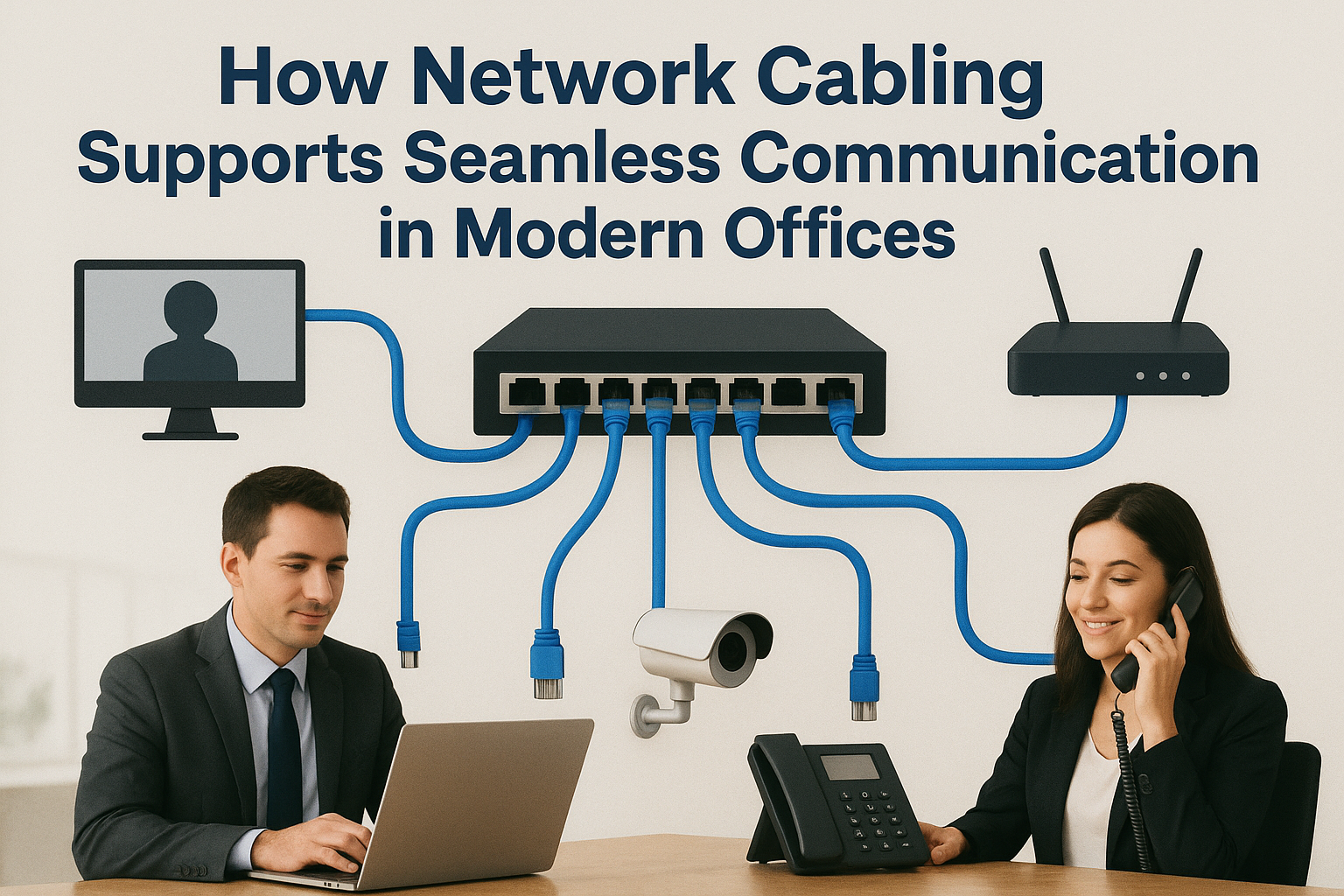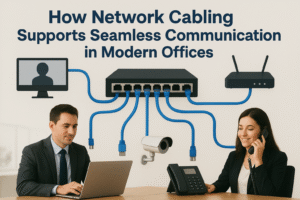In today’s fast-paced business world, communication is everything. Whether it’s a quick video call with the client, file sharing between departments, or accessing a cloud-based system, a strong network is essential for every company’s smooth operations. That’s why every company’s network needs structured cabling to keep everything connected.
Let’s explore more about network cabling and how it plays a vital role in ensuring seamless communication in modern offices.
1. The Foundation of Office Connectivity
Consider network cabling as your office’s nervous system, as it quietly carries data, voice, and video signals from one point to another. Every video streamed, email sent, or online meeting joined depends on these cables doing their job efficiently. Without proper network cabling, most advanced devices can disconnect or slow down easily.
A well-designed cabling system connects.;
- Laptops and computers.
- IP phones and conferencing systems.
- Security cameras and access controls.
- WIFI routers and servers.
Moreover, when all these elements communicate through a structured cabling network, your office enjoys fast, reliable, and uninterrupted connectivity.
2. Boosts Speed and Performance
Nowadays, data travels in gigabytes every second in modern workplaces. Moreover, high-quality Ethernet cables like Cat6, Cat6a, or Cat7 allow data to move quickly and without interruption.
This means:
- Faster internet speed for smooth operations.
- Smooth video conference without buffering or lagging.
- Quick access to shared devices and cloud storage.
Additionally, when employees can work without waiting for files to load or meetings to reconnect, their workplace productivity increases significantly.
3. Enables Smooth Internal Communication
Modern offices depend entirely on tools like Slack, Zoom, and Microsoft Teams for collaboration. Further, these platforms require a high-speed and stable network to function correctly.
A structured cabling setup ensures;
- Improved voice and video quality during calls.
- Instant message delivery without delays.
- Smooth data sharing between departments.
Furthermore, strong network cabling supports stable communication channels, and that’s mandatory for seamless teamwork, whether you manage onsite, offsite, or hybrid staff.
4. Reduces Downtime and Maintenance Costs
Outdated or unorganized cabling may cause several complications, including network downtime, signal drop, and frequent disconnections. Conversely, structured cabling uses a standardized layout that’s easy to manage and troubleshoot.
Benefits include;
- Clean cable management leads to a few technical issues.
- Quick fault identification when something goes wrong.
- Simplified maintenance reduces repair costs.
Moreover, this reliability means the IT team spends less time fixing issues, and your employees spend more time completing their assigned work flawlessly.
5. Supports Business Scalability
Every growing business eventually expands its network, such as adding new devices, workstations, and office floors. Structured cabling systems are built with future scalability in mind.
That means you can easily;
- Add new devices without rewiring the entire setup.
- Upgrade from Cat6 to Cat7 or fiber optics for higher speeds.
- Integrate advanced systems like VoIP, IoT devices, or smart building technology.
Precisely, structured cabling expands with your business, saving both money and time in the long run.
6. Improves Overall Office Efficiency
A reliable cabling network not only improves communication but also boosts the entire workflow. With everything connected with a unified infrastructure;
- Employees can collaborate and communicate faster.
- It becomes simpler and easier for the IT team to manage the network.
- Data can move securely across departments.
Thus, this level of efficiency is needed to create a professional and safe work environment for everyone where communication never breaks down.
Bottom Line
In today’s digital-first offices, strong cabling determines strong communication. Moreover, structured network cabling may not be visible, but it plays a crucial role in keeping operations smooth, the team connected, and customers satisfied.
Additionally, nowadays, more businesses are adopting digital tools, cloud systems, and remote collaboration platforms. Investing in a reliable cabling setup isn’t just a technical choice; it’s a wise business decision.
Moreover, a well-planned network cabling system ensures modern communication, helping your offices stay connected, efficient, and ready for the future.





